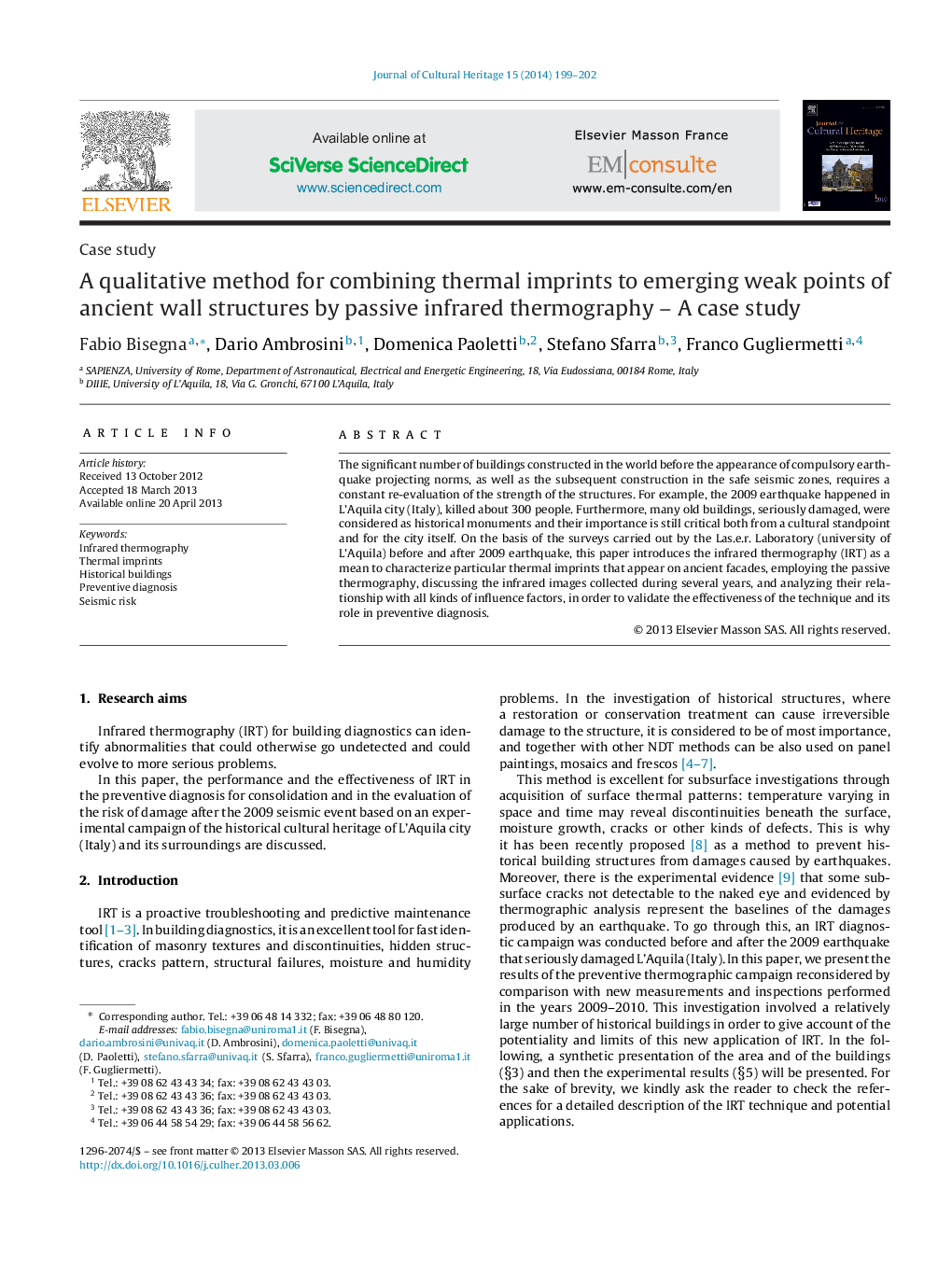| کد مقاله | کد نشریه | سال انتشار | مقاله انگلیسی | نسخه تمام متن |
|---|---|---|---|---|
| 1038223 | 944208 | 2014 | 4 صفحه PDF | دانلود رایگان |
The significant number of buildings constructed in the world before the appearance of compulsory earthquake projecting norms, as well as the subsequent construction in the safe seismic zones, requires a constant re-evaluation of the strength of the structures. For example, the 2009 earthquake happened in L’Aquila city (Italy), killed about 300 people. Furthermore, many old buildings, seriously damaged, were considered as historical monuments and their importance is still critical both from a cultural standpoint and for the city itself. On the basis of the surveys carried out by the Las.e.r. Laboratory (university of L’Aquila) before and after 2009 earthquake, this paper introduces the infrared thermography (IRT) as a mean to characterize particular thermal imprints that appear on ancient facades, employing the passive thermography, discussing the infrared images collected during several years, and analyzing their relationship with all kinds of influence factors, in order to validate the effectiveness of the technique and its role in preventive diagnosis.
Journal: Journal of Cultural Heritage - Volume 15, Issue 2, March–April 2014, Pages 199–202
